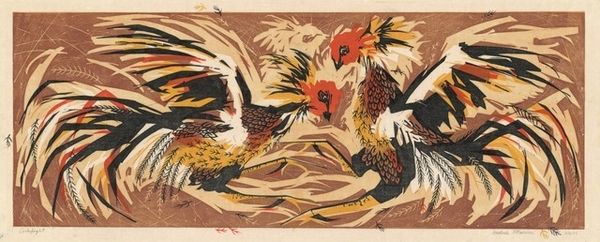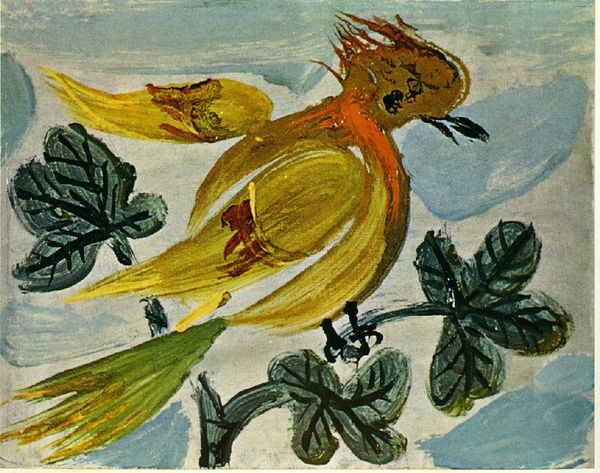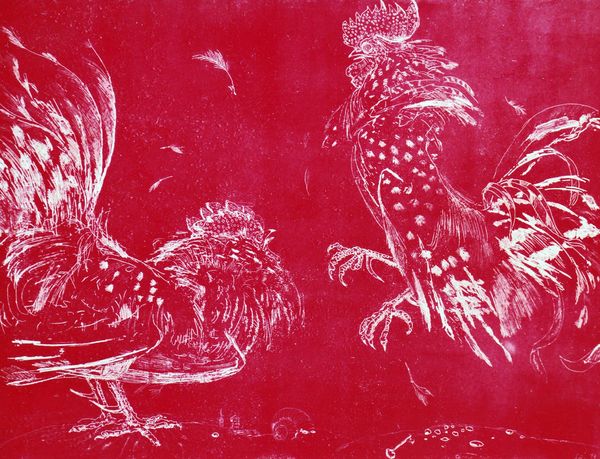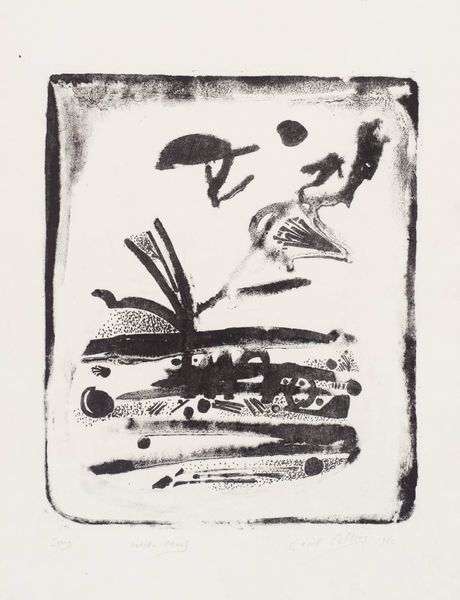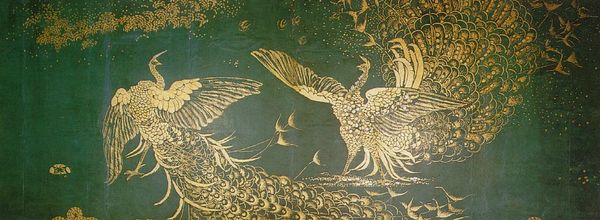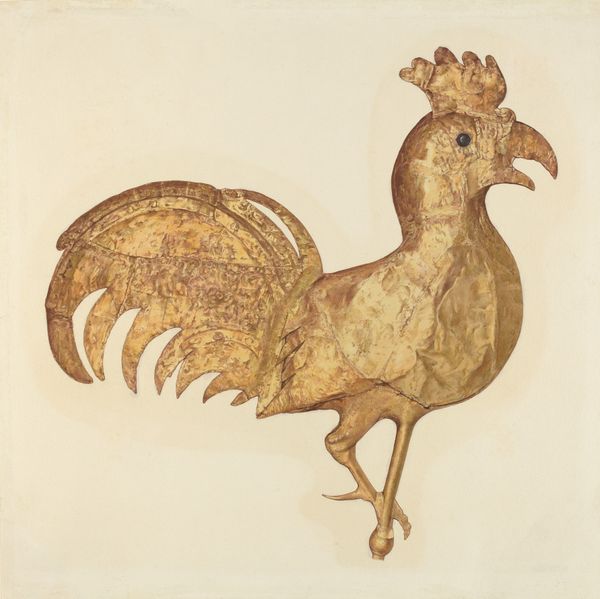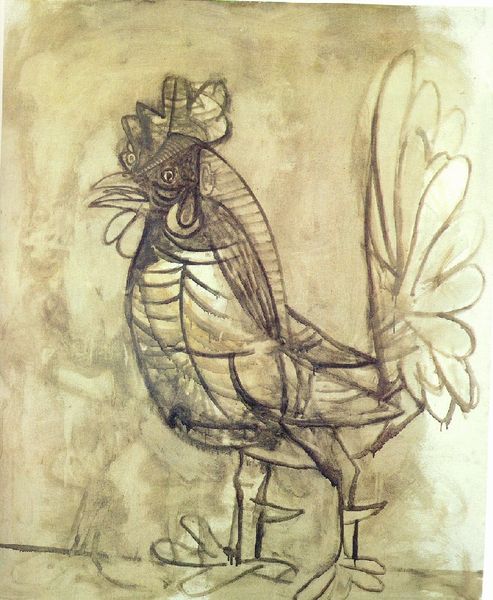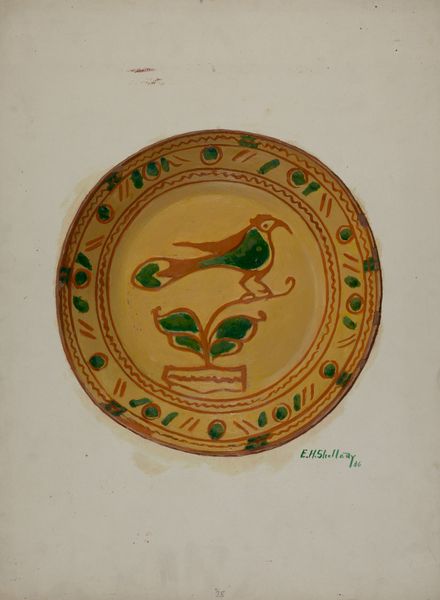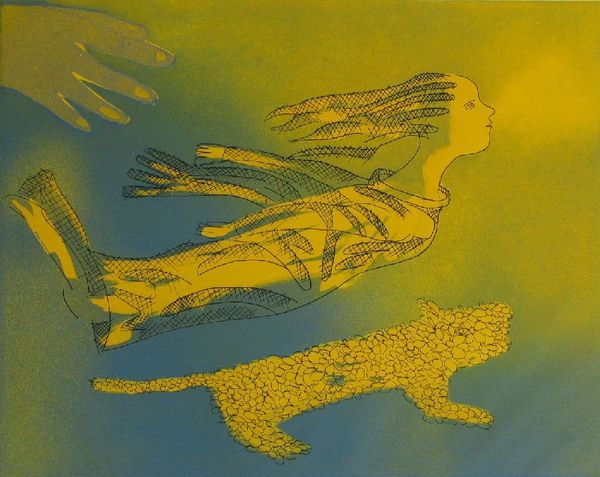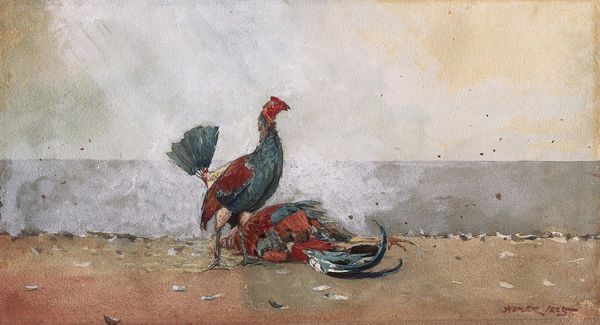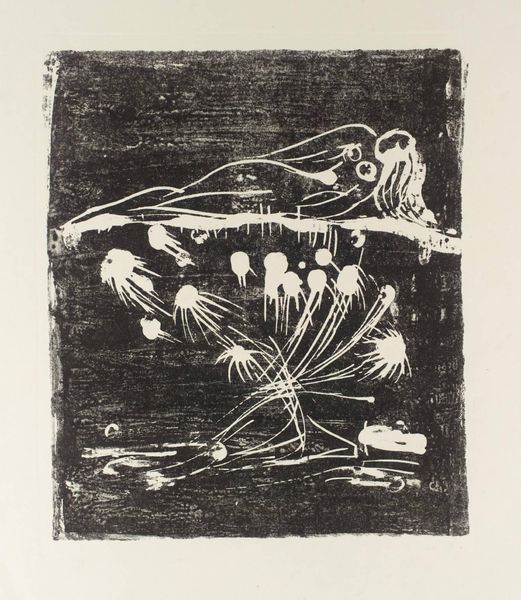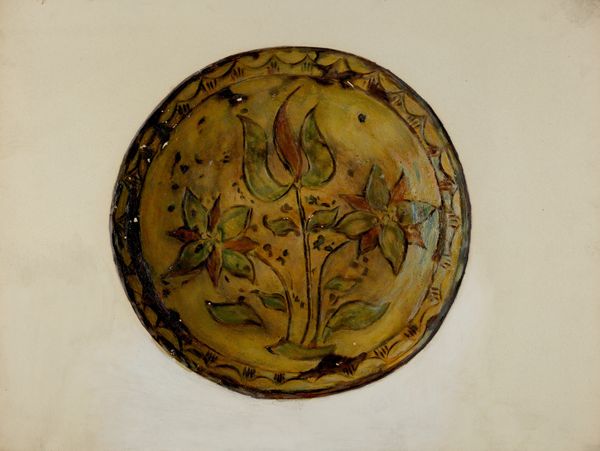
painting, oil-paint, ceramic
#
cubism
#
painting
#
oil-paint
#
ceramic
#
bird
#
figuration
#
oil painting
#
modernism
Copyright: Pablo Picasso,Fair Use
Curator: Well, this strikes me as…deceptively simple, perhaps? Is it…a dinner plate? Something ceremonial? It feels so primal, immediate, despite being, you know, art. Editor: This ceramic piece is entitled “Pigeon”, created by Pablo Picasso in 1947. Picasso, as we know, really embraced the accessibility and quotidian nature of ceramic. Here he has merged, as it were, high and low art. Curator: Right. And of course, the pigeon, particularly after the Second World War, took on this huge symbolic weight. Tell us more about its post-war cultural significance as Picasso’s favored emblem of peace. Editor: Well, during and after World War II, the imagery of birds was, understandably, everywhere – symbols of hope, messages of resilience… I mean, it's hard not to feel that context looming large as we observe this. He’s rendering the dove in oil paint, which is atypical. And using thick strokes so there’s a really palpable presence on the dark surface. A rough application of the medium, right? Curator: Absolutely, you can see the weight and the urgency there. Consider this—after such a destructive global conflict, images like this, accessible through reproductions and prints, played a pivotal role in shaping the collective yearning for peace. Picasso, through his fame, was a major force for the institutionalisation of dove symbolism. But in rendering the emblem for peace on a mundane household object, one might assume that this choice also diminishes the dove's significance? Editor: Maybe? Or elevates the household, charges it with meaning? There is an undeniably rough quality to this work, an imperfection...as if it emerged not from a studio but from somewhere wilder, something…real. The way the white paint clumps, mimicking feathers – it’s really wonderful and spontaneous. Curator: And those gestural strokes also nod to the cubist language that Picasso helped pioneer. Though in some respects this image abandons, for clarity’s sake, many of the conventions of the movement. In either case, the artwork became very important at different points within popular culture and continues to be meaningful to some to this day. Editor: Yes! I feel that even now. It is simultaneously rough and so filled with hope. It speaks of survival and a way out. Its beauty lies in that simple imperfection and the image it calls to mind. Curator: The pigeon's cultural significance remains relevant today as societies across the globe strive for peaceful resolutions amidst various disputes. Editor: Very well put!
Comments
No comments
Be the first to comment and join the conversation on the ultimate creative platform.

